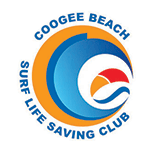Beach Safety
We currently Patrol from Jervoise Bay Sailing Club in the South to Port Coogee in the North. Our Patrol Flags are set up in front of the Club which is our main Patrol area. We conduct roving and mobile patrols to all other areas of the coast. Our Patrol season is from October to April and vary times between Saturday Morning/Afternoon and Sunday Morning/Afternoon. We also have lifesavers patrolling Port Coogee and when there is no one on location here we will always have an ERP stationed every time we are on patrol (Emergency Response Point)
Some great information on Beach Safety and current beach conditions, please click these links
https://www.mybeach.com.au/safety-rescue-services/
http://surflifesavingwa.com.au/our-beaches/beachsafe
http://www.mybeach.com.au/beach/coogee-beach/
How to keep safe at our beach?
- Be sensible, enter the water slowly and don’t just run and dive in as there may be a bank
- Jetty Jumping can be fun but be sensible with ensuring waiting people to be removed from water before jumping in
- Snorkeling the ship wreck, be mindful of sharp edges and always have a buddy
- Pontoon, always use the ladder to avoid being cut by barnacles
- Speak to the Lifesavers on duty to find out about current beach conditions
- Port Coogee has a big drop off to deep water (just take note of the signs showing location)

Sharksmart & Beach Emergency Numbers
https://www.sharksmart.com.au/shark-activity/

This website shows information about shark sightings and detections of tagged sharks by the network of monitoring stations. The site also shows the locations of Beach Emergency Numbers – if you need the emergency services at the beach, please use the BEN reference so that help can come directly to you.
What equipment do Lifesavers use?
Surf lifesavers and lifeguards have a range of specialised equipment to reach people in distress as quickly as possible.
All Terrain Vehicles (ATVs) & 4×4’s
Much like a quad bike, these vital tools to help lifesavers get where they need to be with their rescue equipment as quickly as possible.
The rescue tube
A simple flotation device which can be dragged behind the lifesavers as they swim towards the patient. They provide additional buoyancy to the patient who can then be dragged back to shore, or assisted by a rescue board or rescue boat.
The rescue board
A fast simple way of getting to people in the surf. Patients can be loaded onto a board and returned to shore, or simply hold on until a rescue boat or craft can assist.
The Inflatable Rescue Boat (IRB)
IRB’s have become workhorses for lifesaver over the last 40 years. They are fast, agile and can rescue multiple patients in testing conditions.
Rescue Water Craft (RWC)
Commonly known as jet-ski’s, RWCs offer many of the advantages of the IRB, but can be used by a single lifesaver.
What should I do if I need help from a lifesaver?
If you are in the water and need help, you should raise your arm and wave it above your head. This is the universal signal for help.
If you are on land and see someone who may need help in the water, or have any emergency, you should immediately call TRIPLE ZERO emergency. Emergency services including lifeguards will then respond as quickly as possible.
